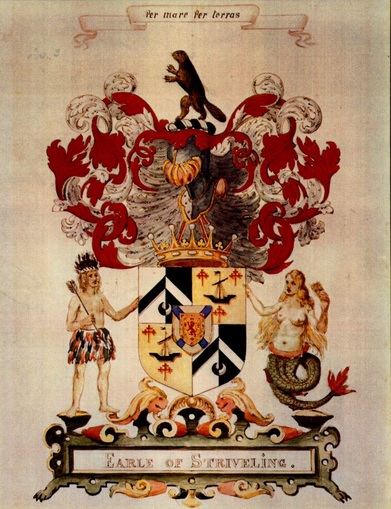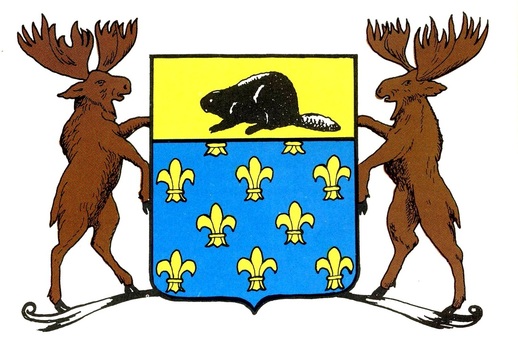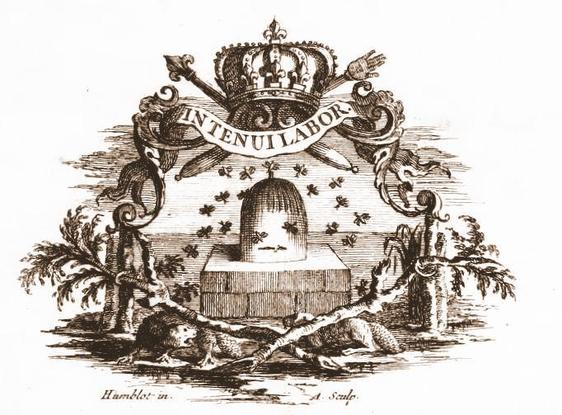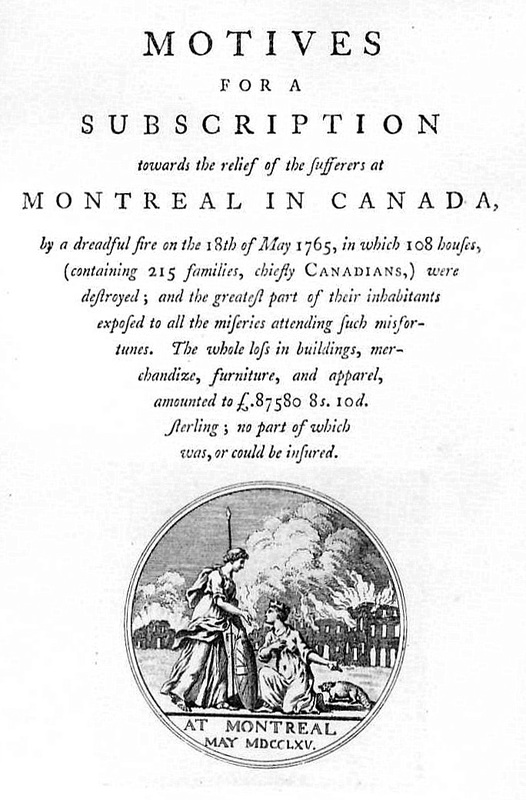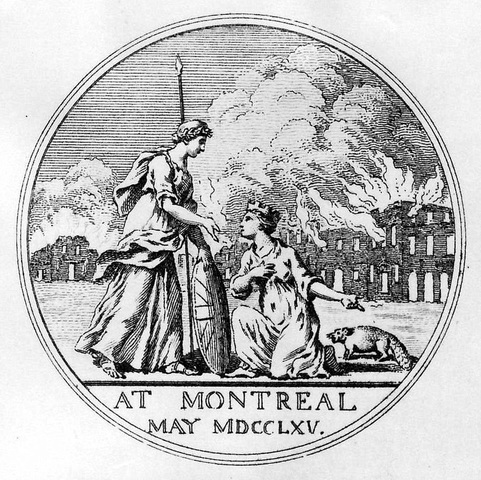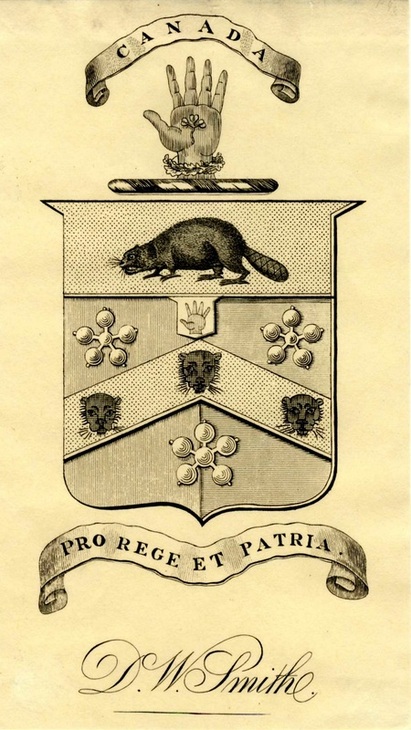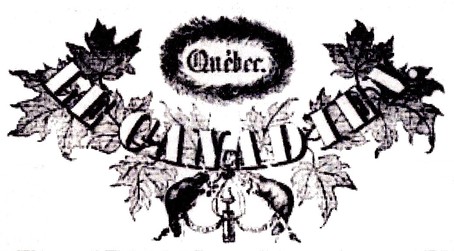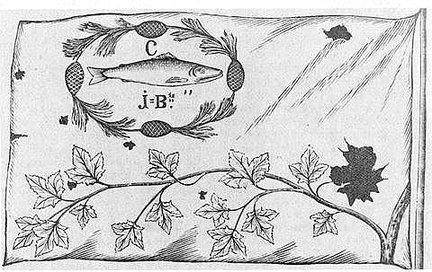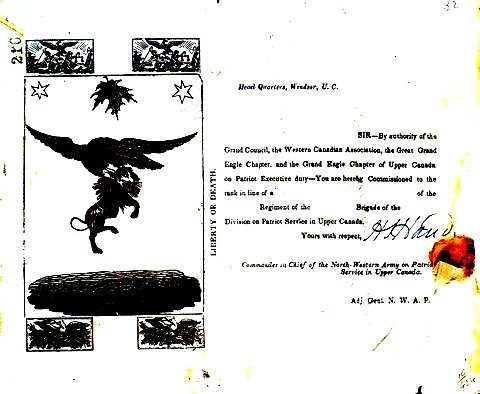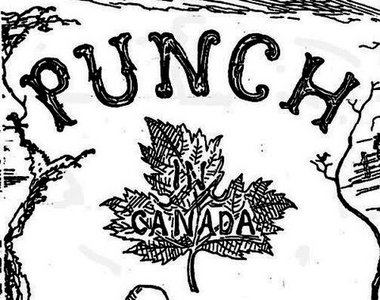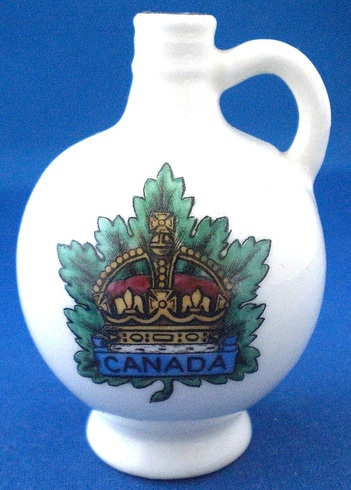Chapter 2
The Beaver and Maple Leaf
While the origins of the beaver as an emblem of Canada are rather well known, the same cannot be said of the maple leaf, a relatively newcomer of the Canadian emblematic scene. A number of authors have advanced the notion that the first mention of the maple leaf as an emblem of French Canada was in the 1805 Quebec Gazette/La Gazette de Québec, and more recently, authors have expressed the view that the leaf already had the status of a Canadian emblem at the time of New France. Some have asserted that both the beaver and maple leaf were originally the emblems of French Canada, and since they were appropriated by Anglophones, Francophones were left with the fleur-de-lis as their distinguishing symbol. This raises the question as to whether one of these groups adopted one or both of these emblems significantly earlier than the other. The object of this chapter is to re-examine these questions based on period documents and to trace the origins of the beaver and maple leaf as emblems of Canada, rather than to describe all the instances of their use once they were widely recognized as representing the country. In subsequent chapters, we will see why only the maple leaf was retained for the coat of arms of the country and not the beaver.
1. The Beaver
The beaver is present for the first time in the crest of the arms of Sir William Alexander, Viscount of Stirling in 1630 and Viscount of Canada and Earl of Stirling in 1633 (fig. 1). His arms were displayed on his manor constructed in 1632.[1] From 1678, and possibly earlier, the arms on the Hudson’s Bay Company, which appeared on the company seal, featured four beavers separated by a red cross.[2]
1. The Beaver
The beaver is present for the first time in the crest of the arms of Sir William Alexander, Viscount of Stirling in 1630 and Viscount of Canada and Earl of Stirling in 1633 (fig. 1). His arms were displayed on his manor constructed in 1632.[1] From 1678, and possibly earlier, the arms on the Hudson’s Bay Company, which appeared on the company seal, featured four beavers separated by a red cross.[2]
Fig. 1 Arms registered to Sir William Alexander, Earl of Stirling, in 1632. Library and Archives Canada.
In 1673, Louis Buade de Frontenac proposed arms for the City of Quebec to the minister of colonies. They displayed a beaver in the upper part of the shield which is supported by two moose. The governor also recommended blue and white as the city’s livery colours.[3] The shield is blazoned: Azure semy of fleurs-de-lis, on a chief Or a beaver Sable (fig. 2). For some reason, the minister did not endorse this proposition, which would have made Quebec the first Canadian city to obtain officially granted arms. A medal titled Kebeca Liberata, celebrating Frontenac’s victory over Admiral William Phips’ fleet, which laid siege to Quebec in 1690, displays a beaver at the feet of an allegorical figure representing France. For the first time, this animal is featured in an official context as the emblem of New France. [4]
Fig. 2 Coat of arms proposed by Count Frontenac for the City of Quebec in 1673. From Heraldry in Canada, 16, no. 3 (September 1982), p. 35.
A vignette illustrating the title page of Father Charlevoix’s Histoire et description générale de la Nouvelle-France (1744) is teeming with animals recognized for their industry.[5] A beehive in the centre is environed by a swarm of bees above which is seen the royal crown placed over the royal sceptre ending in a fleur-de-lis and the sceptre ending in a hand of justice, crossed in saltire. A scroll under the crown bears the motto In tenui labor which refers to the bees.[6] At the foot of the beehive, are two beavers under branches, possibly of cedar, certainly not of maple (fig. 3).
Fig. 3 Vignette from Father François-Xavier Charlevoix’s Histoire et description générale de la Nouvelle-France, 1744, title page.
Beavers building a dam or a lodge are seen on the reverse of jetons struck for New France, inscribed above “NON INFERIORA METALLIS” which means that beaver pelts are worth as much as precious metals, and below “COL. FRANC. DE L’AM. 1754.” which refers to French colonies in America.[7] These jetons were used for counting on a surface divided into squares, along the same principle as the abacus.
Fig. 4 Jeton from the time of Louis XIV, 1754, signed C.N.R. on reverse. The trees appear to be tropical.
Fig. 5 The vignette on the title page of this little known work, published in London in 1765, shows a female figure kneeling before the Goddess Britannia to solicit aid for the Montreal victims of a devastating 1765 fire seen burning in the background. A beaver, emblem of Canada, accompanies the allegorical figure which refers to Montreal since it is wearing a mural crown which is specific to civic heraldry. The long title evaluates the losses, none of which were covered by insurance.
The arms of Captain William Christopher, commander of many Hudson’s Bay Company ships from c. 1756 to 1788, feature a beaver in base.[8] The medal of the Beaver Club of Montreal, instituted in 1785, is illustrated with a beaver chewing at a tree and the motto “Industry & Perseverance.” The same image is found on the seal of the North West Company as well as in the crest of the arms attributed to that company. The same crest appears in the arms granted to William and Simon McGillivray by the Kings of Arms of England on 6 June 1823. (Illustrations of these arms are found on this site: http://heraldicscienceheraldique.com/glanures-heacuteraldiques--heraldic-gleanings.html no. 8). Worthy of mention as well are the beaver supporters added to the arms Sir Guy Carleton, when he was created 1st Baron Dorchester in 1786. The Upper Canada Preserved medal struck by the Loyal and Patriotic Society of Upper Canada during the war of 1812 shows the lion of England protecting the Canadian beaver from the American eagle ready to attack on the other side of a river. An 1820 token of the North West Company displays a beaver on its reverse.[9] Sir David William Smith of Pickering Upper Canada was granted arms with a beaver in chief when he was created a baronet in 1821 (fig. 6).[10] The arms granted to the Canada Company by the Heralds of England in 1825 included a beaver.[11] The skillful rodent also adorns the seal conceived in 1833 by the painter Joseph Légaré for the city of Quebec (fig. 7).[12] The first arms of Montreal designed for the municipal seal by Jacques Viger, its first mayor, and adopted in 1833, feature the beaver in base.[13] The animal is also present in arms of the North American Colonial Association of Ireland, dated1835.[14] The first Canadian postage stamp designed by Sir Sandford Fleming and issued 1851, displayed a large beaver as the central image from which it derived the name of “three-penny beaver.”
Fig. 6 Bookplate of Sir David William Smith of Pickering, surveyor-general of Upper Canada and member of the Legislative Assembly of that province; created a baronet 30 August 1821 and granted the following armorial bearings: Arms – Per pale Gules and Azure on a chevron Or, between three cinquefoils Argent, as many leopards’ faces Sable, on a chief of the third [Or] a beaver passant proper; Crest – A sinister hand erect apaumée, couped at the wrist Gules, the wrist encircled with a wreath of oak Or, the palm charged with a trefoil slipped Argent; Motto – above “Canada” below “Pro rege et patria.” The baronetcy became extinct with the death of Smith in 1837. The bookplate is a gift to the author by Warren Baker.
Fig. 7 Old arms of Quebec City derived from its municipal seal as designed by Joseph Légaré in 1833. On a bowl by The Foley China (Wileman & Co), England, dated 1900-10. A. & P. Vachon Collection, Canadian Museum of History.
Another reference to the beaver is noteworthy because it expresses mixed feelings about this rodent as a national emblem. In a lecture entitled "The Duties of Educated Young Men in British America" delivered in 1863, Sir John William Dawson describes the emblems of Canada as follows:
“Canada has two emblems―the beaver and the maple. The beaver in his sagacity, his industry, his ingenuity, and his perseverance, is a most respectable animal; a much better emblem for our country than the rapacious eagle or even the lordly lion; but he is also a type of unvarying instincts and Old World traditions. He does not improve, and becomes extinct rather than change his ways. Some of our artists have the bad taste to represent the beaver as perched on the maple bough, a most unpleasant position for the poor animal, and suggestive of the thought, that he is in the act of gnawing through the trunk of our national tree (the maple). Perhaps some more venturous designer may some day reverse the position, and represent the maple branch as fashioned into a club, wherewith to knock the beaver on the head.” [15]
“Canada has two emblems―the beaver and the maple. The beaver in his sagacity, his industry, his ingenuity, and his perseverance, is a most respectable animal; a much better emblem for our country than the rapacious eagle or even the lordly lion; but he is also a type of unvarying instincts and Old World traditions. He does not improve, and becomes extinct rather than change his ways. Some of our artists have the bad taste to represent the beaver as perched on the maple bough, a most unpleasant position for the poor animal, and suggestive of the thought, that he is in the act of gnawing through the trunk of our national tree (the maple). Perhaps some more venturous designer may some day reverse the position, and represent the maple branch as fashioned into a club, wherewith to knock the beaver on the head.” [15]
2. The Maple Leaf
A relatively recent trend has been to declare that the maple leaf already possessed the status of a Canadian symbol at the time of New France. The brochure The National Flag of Canada (1966) states “The maple leaf seems to have been regarded as a Canadian emblem as early as 1700, if not before.” [16] The 1967 brochure, The Arms Flags and Emblems of Canada, while providing a bit more information, remains vague: “The researches of a former president of the Royal Society of Canada led him to conclude that ‘the maple leaf was looked upon as a fit emblem for Canadians as early as 1700 if not before’.” [17] The 1978 brochure merely states: “It is said that the maple leaf was looked upon as a fit emblem for Canadians as early as 1700 if not before.” The 1987 publication shortens the statement to: “The maple leaf was first associated with Canada as early as the 1700s” which means very little.[18] Unfortunately these increasingly more vague statements, which provide no documentary source, were believed to be reliable by an impressive number of authors.[19]
Long before 1700, the published authors of the time of New France had noted the utility aspects of the maple whose wood served to make oars, handles for tools, provided good firewood and potash from its ashes, and particularly syrup and sugar from its sap depending on the amount of boiling. Some noted the beauty of the tree in general, and except for one author who compares the shape of its leaf to a goose’s webbed foot,[20] there seems to be little attention paid to the leaf itself, not even to its spectacular autumn colours. After many years of research, I have not found one author of the time of New France who underlined the symbolic aspect of the maple leaf.[21] Perhaps a documentary source will be found confirming the symbolic status of the leaf as early as the eighteenth century. This would be a most significant discovery! But for the time being, no documented instance of this early status has been brought to light. Contrary to the beaver, the maple leaf is not displayed on medals, tokens or coats of arms before the nineteenth century. Neither has it been found before that time in decorative arts, something which helps confirm that it had not yet acquired a symbolic value in the collective consciousness.[22]
It has often been claimed, without giving a day or month of publication, that the first mention of the maple leaf as the emblem of French Canadians was in the Quebec Gazette/La Gazette de Québec of 1805.[23] I have gone through the entire year of that newspaper without finding anything to that effect? On the other hand, I have found a reference to the maple tree, and by extension the leaf, in the biting irony of an epigram contained in Le Canadien of 1806, the rival newspaper to the English Mercury:
A relatively recent trend has been to declare that the maple leaf already possessed the status of a Canadian symbol at the time of New France. The brochure The National Flag of Canada (1966) states “The maple leaf seems to have been regarded as a Canadian emblem as early as 1700, if not before.” [16] The 1967 brochure, The Arms Flags and Emblems of Canada, while providing a bit more information, remains vague: “The researches of a former president of the Royal Society of Canada led him to conclude that ‘the maple leaf was looked upon as a fit emblem for Canadians as early as 1700 if not before’.” [17] The 1978 brochure merely states: “It is said that the maple leaf was looked upon as a fit emblem for Canadians as early as 1700 if not before.” The 1987 publication shortens the statement to: “The maple leaf was first associated with Canada as early as the 1700s” which means very little.[18] Unfortunately these increasingly more vague statements, which provide no documentary source, were believed to be reliable by an impressive number of authors.[19]
Long before 1700, the published authors of the time of New France had noted the utility aspects of the maple whose wood served to make oars, handles for tools, provided good firewood and potash from its ashes, and particularly syrup and sugar from its sap depending on the amount of boiling. Some noted the beauty of the tree in general, and except for one author who compares the shape of its leaf to a goose’s webbed foot,[20] there seems to be little attention paid to the leaf itself, not even to its spectacular autumn colours. After many years of research, I have not found one author of the time of New France who underlined the symbolic aspect of the maple leaf.[21] Perhaps a documentary source will be found confirming the symbolic status of the leaf as early as the eighteenth century. This would be a most significant discovery! But for the time being, no documented instance of this early status has been brought to light. Contrary to the beaver, the maple leaf is not displayed on medals, tokens or coats of arms before the nineteenth century. Neither has it been found before that time in decorative arts, something which helps confirm that it had not yet acquired a symbolic value in the collective consciousness.[22]
It has often been claimed, without giving a day or month of publication, that the first mention of the maple leaf as the emblem of French Canadians was in the Quebec Gazette/La Gazette de Québec of 1805.[23] I have gone through the entire year of that newspaper without finding anything to that effect? On the other hand, I have found a reference to the maple tree, and by extension the leaf, in the biting irony of an epigram contained in Le Canadien of 1806, the rival newspaper to the English Mercury:
“Fable dedicated to the Mercury
The maple said one day to the creeping thorn
Why do you cling to passers-by?
What, wretched fool, can you gain from this?
None replied the plant:
I simply enjoy rending them.”
(See French original in endnote)[24]
The maple said one day to the creeping thorn
Why do you cling to passers-by?
What, wretched fool, can you gain from this?
None replied the plant:
I simply enjoy rending them.”
(See French original in endnote)[24]
In 1898, Joseph Pope, under-secretary of state, cites this epigram as the first mention of the maple leaf as the emblem of French Canadians, but he believes that the creeping thorn is the thistle of Scotland. [25] In fact, it is far more likely the rose of England, which has thorns and belongs to the Rosaceae family as do some thorns. Moreover, Canada was a colony of England at the time, not of Scotland. On the other hand, Pope’s interpretation that the symbolism of the maple tree extended to the leaf seems valid, because this was mostly the way of expressing this idea in Lower Canada at the time (see below extracts from the speech of Denis-Benjamin Viger and the song of Ludger Duvernay). [26]
In a medal made by the silversmith Robert Cruickshank, probably as a piece of First Nations trade silver, a large maple leaf replaces the four quarters of the arms of Great Britain while preserving the rest of the armorial components. This piece was made after 1773, when Cruickshank settled in Montreal and before 1807 when he set out for London and perished on his return to Canada. The presence of the maple leaf on this medal is a powerful sign that Anglophones considered the leaf as a Canadian symbols in the early years of the nineteenth century and possibly some years before.[27] In other words, both Francophone and Anglophone Canadians chose the maple leaf to represent them at about the same time. Cruickshank’s medal may be the first example of the maple leaf being presented alone as an emblem of the country. Generally Anglophone Canadians tended to represent the maple leaf alone, whereas Francophone Canadians often displayed wreaths or branches of maple. What is certain is that, in the course of the nineteenth century, the maple leaf became viewed as the emblem of both linguistic groups.
An unrelenting claim, which is still found on the Internet, is that the Saint-Jean-Baptiste Society officially adopted the maple leaf as its emblem at its inaugural meeting in 1834.[28] One must look at the documentation of the period to see what really took place. The organizer of the banquet for the national day of French Canadians on 24 June 1834 was Ludger Duvernay, President of the Society “Aide toi et le ciel t’aidera” (Help yourself, and heaven will help you) out of which evolved the Saint-Jean-Baptiste Society, formally incorporated in 1843 only.[29] The adoption of the maple leaf at this first meeting is not mentioned in any of the known accounts of the period, although they would inevitably have reported such an important declaration.[30] The description of the 1835 banquet mentions a wreath of maple branches placed between flags of Great Britain and those adopted by the Canadiens.[31]
On the other hand, at the 1836 banquet, the room was decorated with wreaths of maple branches and the president, Denis-Benjamin Viger, made an unequivocal statement regarding the emblematic status of the maple tree. It is important to report his words accurately because they have often been cited with modifications, without giving any source and quoted as if they dated from 1834:
“The president …. said of the maple, of which there was a wreath by his side. This tree, which grows in our valleys and on our mountains, was once young and battered by storms. It languished as it painfully extracted its nourishment from the earth which gave it life. But soon it began to thrive, and having become tall and strong, bravely faced the elements, conquered the north wind which could stir it no more. The maple is the king of our forests; it is the emblem of the peuple canadien.” (Meaning French Canadians; see original French in endnote.) [32]
In the course of the meeting Ludger Duvernay struck up a song of his own composition describing the maple as a symbol of unity:
In a medal made by the silversmith Robert Cruickshank, probably as a piece of First Nations trade silver, a large maple leaf replaces the four quarters of the arms of Great Britain while preserving the rest of the armorial components. This piece was made after 1773, when Cruickshank settled in Montreal and before 1807 when he set out for London and perished on his return to Canada. The presence of the maple leaf on this medal is a powerful sign that Anglophones considered the leaf as a Canadian symbols in the early years of the nineteenth century and possibly some years before.[27] In other words, both Francophone and Anglophone Canadians chose the maple leaf to represent them at about the same time. Cruickshank’s medal may be the first example of the maple leaf being presented alone as an emblem of the country. Generally Anglophone Canadians tended to represent the maple leaf alone, whereas Francophone Canadians often displayed wreaths or branches of maple. What is certain is that, in the course of the nineteenth century, the maple leaf became viewed as the emblem of both linguistic groups.
An unrelenting claim, which is still found on the Internet, is that the Saint-Jean-Baptiste Society officially adopted the maple leaf as its emblem at its inaugural meeting in 1834.[28] One must look at the documentation of the period to see what really took place. The organizer of the banquet for the national day of French Canadians on 24 June 1834 was Ludger Duvernay, President of the Society “Aide toi et le ciel t’aidera” (Help yourself, and heaven will help you) out of which evolved the Saint-Jean-Baptiste Society, formally incorporated in 1843 only.[29] The adoption of the maple leaf at this first meeting is not mentioned in any of the known accounts of the period, although they would inevitably have reported such an important declaration.[30] The description of the 1835 banquet mentions a wreath of maple branches placed between flags of Great Britain and those adopted by the Canadiens.[31]
On the other hand, at the 1836 banquet, the room was decorated with wreaths of maple branches and the president, Denis-Benjamin Viger, made an unequivocal statement regarding the emblematic status of the maple tree. It is important to report his words accurately because they have often been cited with modifications, without giving any source and quoted as if they dated from 1834:
“The president …. said of the maple, of which there was a wreath by his side. This tree, which grows in our valleys and on our mountains, was once young and battered by storms. It languished as it painfully extracted its nourishment from the earth which gave it life. But soon it began to thrive, and having become tall and strong, bravely faced the elements, conquered the north wind which could stir it no more. The maple is the king of our forests; it is the emblem of the peuple canadien.” (Meaning French Canadians; see original French in endnote.) [32]
In the course of the meeting Ludger Duvernay struck up a song of his own composition describing the maple as a symbol of unity:
“Let us then inscribe on our banners
The motto of our future:
Strength grows from harmony
Around the hallowed maple …”
(See original French in endnote) [33]
The motto of our future:
Strength grows from harmony
Around the hallowed maple …”
(See original French in endnote) [33]
It should be noted that the two documents quoted here are a speech and a song, neither of which constitute the official adoption of anything. Moreover the speech says that the maple is the emblem of French Canadians, not of the society holding the meeting.
Since there were a number of Anglophones at the banquet, one might wonder if the expression peuple canadien did not also include Anglophone Canadians. Thomas Storrow Brown, a journalist and one of the society’s vice presidents, provides an unequivocal answer to this question. In his speech, he notes that it is often said that Canadians (Canadiens) detested the English language and English customs. He contradicts this by pointing out that they had listened attentively and appreciated the speech delivered earlier by Dr. Edmund Bailey O’Callaghan (medical doctor, journalist and historian) and were showing the same appreciation for his own words. Therefore, in the context of the banquet, Canadian meant French Canadian.[34]
Since there were a number of Anglophones at the banquet, one might wonder if the expression peuple canadien did not also include Anglophone Canadians. Thomas Storrow Brown, a journalist and one of the society’s vice presidents, provides an unequivocal answer to this question. In his speech, he notes that it is often said that Canadians (Canadiens) detested the English language and English customs. He contradicts this by pointing out that they had listened attentively and appreciated the speech delivered earlier by Dr. Edmund Bailey O’Callaghan (medical doctor, journalist and historian) and were showing the same appreciation for his own words. Therefore, in the context of the banquet, Canadian meant French Canadian.[34]
Fig. 8 This plate is part of a table service manufactured by Edward Walley of England c. 1856. Besides the beaver on a log and sprays of maple leaves, it is inscribed with the motto of the Société Saint-Jean Baptiste Nos institutions! notre langue et nos lois. (Our institutions! our language and our laws.) and that of the Department of Public Instruction Labor omnia vincit (Work conquers everything). A. & P. Vachon Collection, Canadian Museum of History.
The masthead of the newspaper Le Canadien, 14 November 1836, features a wreath of maple leaves over which is the inscription “LE CANADIEN.” Above, this inscription, the word Québec is seen within a wreath of pine and, at the base, two rampant beavers facing one another are joined by a scroll inscribed Union Liberté. Below the masthead is the motto Nos institutions, notre langue et nos lois !!, which we already mentioned. The text below states: “This masthead does not need explanations; the emblems it contains are all easily recognized. The main one, the maple leaf, has been, as we know, adopted as the emblem of Lower Canada in the same way that the rose is that of England, the thistle that of Scotland and the shamrock that of Ireland.” (see original French in endnote)[35]
Fig. 9 Image on the masthead of Le Canadien, 14 November 1836.
A maple branch also adorned the flag of the patriots of Lower Canada at the Sainte-Scholastique gathering where the ninety-two reformist resolutions were adopted on 1st June 1837. Later that year, the same flag was also flown at the battle of Saint-Eustache and at Saint-Benoît. A one sou coin issued by the Banque du people, also in 1837, featured on the reverse a wreath made of two sprigs of maple joined at their stems.[36].
Fig. 10 This flag, flown by the Patriots of Lower Canada at the battle of Saint-Eustache and at Saint-Benoît, displays a large maple branch along with other symbols. Library and Archives Canada, photo no C-8289.
The Patriots of Upper Canada also viewed the maple leaf as the emblem of their Country. In 1839, the Hunters’ Lodges formed by patriots exiled in the United States issued a number of certificates in the name of the “Grand Council, the Western Canadian Association, the Great Grand Eagle Chapter of Upper Canada on Patriot Executive duty” to enlist volunteers into the “North-Western Army on Patriot Service in Upper Canada.” The certificates contain more republican than Canadian symbols. In the centre, the lion of England, holding the royal crown under its right paw, is being carried away held by the scuff of the neck in the beak of an eagle (a republican symbol) flying above water, where supposedly it will be drop the lion. Above the lion, between two stars, a large maple leaf points downwards. In each of the two upper corners, a vignette shows the arms of the State of New York with, on its side, a lictor’s bundle (fasces) with an axe, an emblem of the French Republic.[37] The lower two vignettes display a dove holding in its beak an ear of wheat, perched on a canon within a spray of wheat. Also visible is the slogan attributed to Patrick Henry: “Liberty or Death.” The same imagery appears on the heading of a document entitled: “Regulations and Pay of the North Western Army on Patriot Service in Upper Canada.”[38]
Fig. 11 One of the enlistment certificates of the Hunters’ Lodges formed of patriots exiled in the United States, 1839. Library and Archives Canada, photo C-46208.
An enthusiastic crowd awaited the arrival of Lord Elgin at Quebec City in the autumn of 1847. Looking at the welcoming committee, the governor remarked: “… the St George’s and St Jean Baptiste societies turning out together for the first time and the president of the former wearing the maple leaf, the Canadian French Emblem.”[39] Elgin seems to imply that the president of the St. George Society is wearing the maple leaf as an expression of solidarity with members of the Société Saint-Jean-Baptiste. This seems unlikely all the more so that, by that time, the maple leaf had been adopted by both linguistic groups and the President of the St. George Society was probably wearing it as the emblem of his own society. Examples of the maple leaf’s popularity among Anglophones are numerous in publications of the period, for instance, The Original Canadian Quadrilles of 1847 featured a beaver surrounded by maple branches on its cover page.[40] The next year, the Maple Leaf or Canadian Annual, a literary journal, described the maple leaf as “the chosen emblem of Canada.”[41] The title page of the 1849 Punch in Canada was adorned with a single maple leaf in which the « in Canada » part of the title was inscribed on the leaf (fig. 12). An album of songs titled The Emblem of Canada, published c. 1850, was illustrated under its title with a large maple leaf pointing downwards.[42] Another example of a single maple leaf is found on the title page of Alexander Muir’s popular song, The Maple Leaf For Ever, composed in 1867.[43]
Fig. 12 A single maple leaf adorned the title page of Punch in Canada from 3 February 1849 (detail). Library and Archives Canada, photo C-30287.
The maple leaf was officially recognized for the first time as a Canadian symbol in 1859 when the Prince of Wales presented the 100th Regiment (Royal Canadians) with its colours in England. A maple leaf was present at each corner on one face of the regimental flag (fig. 13). The next year the regiment incorporated branches of maple into its badge, and that same year the leaves were used extensively in decorations for the Prince of Wales's visit. As single maple leaf adorned the General Service Badge of the Canadian Expeditionary Force during World War I (fig. 14).
Fig. 13 Original colours of the 100th Prince of Wales Royal Canadian Regiment in J. Ross Robertson, Landmarks of Toronto: a Collection of Historical Sketches of the Old Town of York from 1792 until 1833 and of Toronto from 1834 to 1895 (Toronto: John Ross Robertson, 1896), facing p. 774.
Fig. 14 General Service Badge of the Canadian Expeditionary Force during World War I on a miniature roman bottle by W.H. Goss, England, c. 1918. A. & P. Vachon Collection, Canadian Museum of History.
***
The beaver appeared in the arms of the Viscount of Sterling 41 years before Frontenac proposed its inclusion in the arms of the City of Quebec. Because of the geography and years that separate the two events, there can be little doubt that Frontenac was not influenced by the Viscount’s earlier choice. This may seem like a truism, but it does underscore the fact that persons or organizations can choose the same symbol belonging to the land without imitating one another. In fact, both the Hurons in the east and the First Nations of the West Coast recognized the beaver as a symbol before the discovery of the Americas.
This chapter aims to rectify certain misconceptions regarding the maple leaf, such as the assertion that it was already considered a symbol of Canada at the time of New France, that it was officially adopted by the Société Saint-Jean-Baptiste in 1834, or that it was chosen as an emblem significantly earlier by Francophone Canadians as opposed to Anglophone Canadians.[44] The documents presented here show that both Francophone and Anglophone Canadians considered the maple leaf as a proper emblem to represent them at the very beginning of the nineteenth century, namely in Le Canadien of 1806 Cruickshank’s medal made not later than 1807. It seems that French Canada was the first to record in writing that the maple tree or leaf was its emblem, in a speech at the banquet of the Société Saint-Jean-Baptiste and in Le Canadien, both in 1836. However, the parallelism between the two groups continued with the adoption of the leaf by the Upper Canada Rebels, clearly recorded on recruitment certificates of 1839. The remark of Lord Elgin in 1847 to the effect that the President of St. George’s Society was wearing “the maple leaf, the Canadian French Emblem” is open to interpretation. Given that Anglophones had also adopted the maple leaf, the St. George president was more likely wearing it as appropriate for his own society. The next year, the Maple Leaf or Canadian Annual described the maple leaf as “the chosen emblem of Canada.” For some reason, Anglophones tended to favour the single maple leaf (Sir John William Dawson being one exception to this), whereas Francophones often chose the maple tree or maple branches.
The almost parallel choice of the beaver and maple leaf by both social groups may not be explained by history or by any defining characteristic of one group or another, but by the fact that both symbols derive from the land. The fact that Anglophone Canadians widely adopted the maple leaf no doubt prompted Francophones, and particularly the province of Quebec, to adopt the fleur-de-lis as its primary identifying emblem. In succeeding chapters, we will see why the maple leaf was kept in the arms of Canada and the beaver was not.
This chapter aims to rectify certain misconceptions regarding the maple leaf, such as the assertion that it was already considered a symbol of Canada at the time of New France, that it was officially adopted by the Société Saint-Jean-Baptiste in 1834, or that it was chosen as an emblem significantly earlier by Francophone Canadians as opposed to Anglophone Canadians.[44] The documents presented here show that both Francophone and Anglophone Canadians considered the maple leaf as a proper emblem to represent them at the very beginning of the nineteenth century, namely in Le Canadien of 1806 Cruickshank’s medal made not later than 1807. It seems that French Canada was the first to record in writing that the maple tree or leaf was its emblem, in a speech at the banquet of the Société Saint-Jean-Baptiste and in Le Canadien, both in 1836. However, the parallelism between the two groups continued with the adoption of the leaf by the Upper Canada Rebels, clearly recorded on recruitment certificates of 1839. The remark of Lord Elgin in 1847 to the effect that the President of St. George’s Society was wearing “the maple leaf, the Canadian French Emblem” is open to interpretation. Given that Anglophones had also adopted the maple leaf, the St. George president was more likely wearing it as appropriate for his own society. The next year, the Maple Leaf or Canadian Annual described the maple leaf as “the chosen emblem of Canada.” For some reason, Anglophones tended to favour the single maple leaf (Sir John William Dawson being one exception to this), whereas Francophones often chose the maple tree or maple branches.
The almost parallel choice of the beaver and maple leaf by both social groups may not be explained by history or by any defining characteristic of one group or another, but by the fact that both symbols derive from the land. The fact that Anglophone Canadians widely adopted the maple leaf no doubt prompted Francophones, and particularly the province of Quebec, to adopt the fleur-de-lis as its primary identifying emblem. In succeeding chapters, we will see why the maple leaf was kept in the arms of Canada and the beaver was not.
Notes
[1] John A. Stewart, The Arms of Nova Scotia (Halifax: Queen’s Printer, 1955), pp. 12-13.
[2] Conrad Swan, Canada Symbols of Sovereignty (Toronto: University of Toronto Press, 1977), p. 216.
[3] [Auguste Vachon], “Un projet sans lendemain” in Heraldry in Canada, 16, no. 3 (September 1982), pp. 34-35; Frontenac to Colbert, 13 November 1673, Library and Archives Canada, MG 5, B1, vol. 5, part 2, p. 99; also published in Rapport de l’Archiviste de la Province de Québec 1926-1927 (Québec: L. Amable Proulx, 1927), p. 29, on the site : http://collections.banq.qc.ca/ark:/52327/2276288 (1926), consulted 16 January 2014.
[4] Medal designed by Jean Mauger, inscribed, obverse: LUDOVICUS XIIII. REX CHRISTIANISS. / I MAUGER F., reverse: FRANCIA IN NOVO ORBE VICTRIX, and KEBECA LIBERATA / M.DC.XC. This medal was re-struck several times; for instance, one medal where the name of the artist is inscribed J. MAUGER, another where the king’s head is by Dollin, and another still where the head is by Roëtier. Jos. Leroux, Le Médailler du Canada/The Canadian Coin Cabinet (Montréal: Beauchemin et Fils, 1888), pp. 16-17.
[5] François-Xavier Charlevoix, Histoire et description générale de la Nouvelle-France … (Paris: Rolin Fils, 1744), title page.
[6] From Virgil’s Georgics, book 4.1, which describes the labour of bees. The full phrase is: In tenui labor, at tenuis non Gloria (My labour is on slight material, but the glory is not small).
[7] M. A.-Léo Leymarie, Exposition rétrospective des colonies françaises de l’Amérique du Nord (Paris: Société d’éditions géographiques, maritimes et coloniales, 1929), p. 101, no. 30.
[8] See on this site: http://heraldicscienceheraldique.com/glanures-heacuteraldiques--heraldic-gleanings.html, no. 2.
[9] Other interesting occurrences of the beaver are found in the exhibition catalogue of artefacts and documents from the Warren Baker collection : From Lachine to Grand Portage, The N.W. Indian Trade/De Lachine à Grand Portage, La traite avec les Indiens au nord-ouest (Cornwall: Inverarden Regency Cottage Museum, et al., 1993).
[10] Conrad Swan, “The Geography of Canada – An Heraldic View” in Heraldry in Canada, 5, no. 3 (September 1971), pp. 22-23.
[11] See on this site: http://heraldicscienceheraldique.com/cartes-canadiennes-aux-armes-de-socieacuteteacutes-commerciales.html.
[12] Daniel Cogné, “Le Castor héraldique” on the site Heraldic America: http://pages.infinit.net/cerame/heraldicamerica/etudes/castor.htm, consulted 26 January 2014.
[13] Émile Miller, Les armoiries de Montréal (Montreal: Adjutor Ménard, 1920), pp.1-2.
[14] Conrad Swan, “The Beaver and the Maple Leaf in Heraldry” in The Coat of Arms, 10, no. 75 (July. 1968), pp. 98-99.
[15] Quoted in Horace Martin, Castorologia (Montréal: Wm. Drysdale & Co., 1892), p. 198.
[16] Secretary of State of Canada, The National Flag of Canada/Le drapeau national du Canada (Ottawa: Queen’s Printer and Controller of Stationery, 1966), no pag.
[17] Department of Secretary of State of Canada, The Arms, Flags and Floral Emblems of Canada/Les armoiries, drapeaux et emblèmes floraux du Canada (Ottawa: Queen’s Printer, 1967), p. 12.
[18] Department of Secretary of State of Canada, Canada Symbols of Nationhood (Ottawa: Minister of Supply and Services Canada, 1987), sheet 4. Subsequent publications by Canadian Heritage entitled Symbols of Canada, published in 1995 (p. 11) and 1999 (p. 10) contain analogous statements.
[19] Bruce Peel, “Emblems of Canada” in The Canadian Encyclopedia, vol. 1(Edmonton: Hurtig Publishers, 1985), p. 566; Michel Lessard, Objets anciens du Québec, la vie domestique (Éditions de l’Homme, 1994), p. 204; Rick Archbold, I Stand for Canada, The Story of the Maple Leaf Flag (Toronto: Macfarlane Walter and Ross, [2002]), p. 37; http://www.fraser.cc/flagscan/nation/natsym.html#r10 quoting The Canadian Encyclopedia; http://www.pch.gc.ca/eng/1363626184104/1363626227047. Sites consulted 27 January 2014.
[20] François-Marc Gagnon, Nancy Senior, Réal Ouellet, eds., The Codex Canadensis and the Writings of Louis Nicolas (Montreal & Kingston: McGill-Queen’s University Press, 2011), pp. 294-295.
[21] Reuben Gold Thwaites, ed., The Jesuit Relations and Allied Documents … 1610-1791 (Cleveland: The Burrows Brothers Company, 1896-1901), relation of 1634, vol. 6, p. 272, relation of 1671, vol. 56, p. 100; Pierre Boucher, Histoire véritable et naturelle des mœurs et productions du pays de la Nouvelle-France vulgairement dite le Canada (Paris: Florentin Lambert, 1664), pp. 44-45 ;Gagnon et al., Codex Canadensis, pp. 294-295; Louis-Armand de Lom d’Arce de Lahontan, Mémoires de l’Amérique septentrionale, ou la suite des voyages de Mr. le Baron de Lahontan, vol. 2 (La Haye: Frères l’Honoré, 1703), pp. 59-60; Joseph-François Lafitau, Mœurs des Sauvages amériquains, comparées aux mœurs des premiers temps, vol. 2 (Paris: Saugrain l’aîné et Charles Estienne Hochereau, 1724), Explication des planches et figures (planche VII) et pp. 154-155; Pierre-François-Xavier Charlevoix, Journal d’un voyage fait par ordre du roi dans l’Amérique septentrionnale (Paris: Nyon Fils, 1744), pp. 121-123; Pierre Kalm, “Voyage de Kalm en Amérique analysé et traduit par L. W. Marchand” (account of 1749) in Mémoires de la Société historique de Montréal, 1880, p. 224.
[22] Among other works, I have consulted: Jean Trudel, L’orfèvrerie en Nouvelle-France (Ottawa: National Gallery of Canada, 1974); A.B. McCullough, Money and Exchange in Canada to 1900 (Toronto: Dundurn Press in co-operation with Parks Canada, 1984); Lessard, Objets anciens du Québec…; Idem, Antiquités du Québec. Objets anciens, vie sociale et culturelle (Éditions de l’Homme, 1995); Idem, Meubles anciens du Québec (Éditions de l’Homme, 1999). See also Swan, “The Beaver and Maple Leaf,” p. 99.
[23] For example: Strome Galloway, « Why the maple leaf is our national emblem » in Canadian Geographic (August/September 1982), p. 32; Encyclopedia Canadiana, vol. 3 (Ottawa: The Canadiana Company Ltd., 1958), p. 411.
[24] Le Canadien, 29 November 1806, p. 8. The original French is :
“Fable dédiée au Mercury
L’Érable dit un jour à la ronce rampante :
Aux passans pourquoi t’accrocher ?
Quel profit, pauvre sotte, en comptes-tu tirer ?
Aucun, lui repartit la plante :
Je ne veux que les déchirer.”
[25] Joseph Pope to George Johnson, 28 February 1898. Library and Archives Canada, MG 30, E 86, no 21m.
[26] The poet William Chapman also places the tree in the forefront in the poem “L’érable” (1889) : “Et nos aïeux, dans leur fierté, / Ont pris sa feuille pour l’emblème, / De leur nationalité.” W. Chapman, Les feuilles d’érable (Montreal: Typographie Gebhardt-Berthiaume, 1890), p. 7.
[27] Cruickshank died in1809 on board the Eweretta on his return from London. The medal belongs to the Henry Birks Collection of Canadian Silver (C220), National Gallery of Canada. It is reproduced in Covenant Chain: Indian Ceremonial and Trade Silver (Ottawa: National Museums of Canada, 1980), p. 119, no 83. Exhibition catalogue by N. Jaye Fredrickson, author, and Sandra Gibb, exhibition coordinator.
[28] See, for instance, Bruce Peel, “Emblems of Canada” in Canadian Encyclopedia, vol. 1, p. 566.
[29] Denis Monière, Ludger Duvernay et la révolution intellectuelle au Bas-Canada (Montréal: Les Éditions Québec/Amérique, 1987), p. 70.
[30] La Minerve, 26 June1834, [p. 2] and Le Canadien, 27 June 1834, [pp. 2-3]. See also: Monière, Ludger Duvernay, pp. 70-74.
[31] La Minerve, 25 June 1835, [p. 2].
[32] Ibid., 27 June 1836, [p. 2]. “Le président … dit en parlant de l’érable dont il avait un feston près de lui : Cet arbre qui croît dans nos vallons, sur nos rochers, d’abord jeune et battu par la tempête, il languit en arrachant avec peine sa nourriture du sol qui le produit, mais bientôt il s’élance et devenu grand et robuste, brave les orages et triomphe de l’aquilon qui ne saurait plus l’ébranler : l’érable c’est le roi de nos forêts, c’est l’emblème du peuple canadien.”
[33] Ibid.
“Inscrivons donc sur nos bannières
Le motto [sic] de notre avenir :
La force naît de la concorde !
Autour de l’érable sacré ….”
[34] Ibid.
[35] The French original reads: “Ce frontispice n’a guère besoin d’explications; les emblèmes qu’il renferme sont tous faciles à comprendre. Le principal, la feuille d’érable, a été, comme on sait, adoptée comme l’emblème du Bas-Canada, de même que la Rose est celui de l’Angleterre, le Chardon de l’Écosse et le Trèfle de l’Irlande.”
[36] See: Auguste Vachon, “Flags of Canada, an Historical Overview” in The Flag Bulletin, 126 (May-June 1988), pp. 92-93 and the site: http://numicanada.com/jetons-medailles-articles.php?article=&id=215, consulted 1 February 2014.
[37] Hervé Pinoteau, Le chaos français et ses signes (La Roche-Rigault [France]: PSR éditions, 1998), pp. 126-28.
[38] Library and Archives Canada, MG 24, B 18, vol. 4, p. 216 and MG 24, B 98. The same image appears on a number of photographs: nos. C-46208, C-11543, C-11544, C-128059, C-128060.
[39] Jacques Monet, The Last Canon Shot: A Study of French-Canadian Nationalism 1837-1850 (Toronto: University of Toronto Press, 1969, p. 265), quoting Elgin’s letter to Grey, 27 September 1847. The same document is found in Library and Archives Canada, MG 24, A10, vol. 21.
[40] The Original Canadian Quadrilles, arranged for the piano forte by J. Maffre (New York: Firth & Hall, 1847). Respectfully dedicated to the Countess of Elgin. See: http://www.nlc-bnc.ca/obj/m5/f1/csm05182-v2.jpg, consulted 31 January 2014.
[41] Encyclopedia Canadiana, vol. 3, p. 412. The Maple Leaf or Canadian Annual was published by H. Rowsell of Toronto.
[42] The Emblem of Canada: Canadian National Song, the Poetry from the “Maple Leaf”. Composed by J. Paton Clarke M.B. (Toronto: A. & S. Nordheimer, [1850?]). See the site: http://www.nlc-bnc.ca/obj/m5/f1/csm1556-v2.jpg, consulted 31 January 2014.
[43] See the site: http://ve.torontopubliclibrary.ca/collected_works/performing_mapleleaf.html, consulted 31 January 2014.
[44] See: “L’usurpation de l’identité proprement canadienne par les anglos” at : http://monarchomaque.org/2010/07/16/usurpation-identitaire/, consulted 31 January 2014.
[1] John A. Stewart, The Arms of Nova Scotia (Halifax: Queen’s Printer, 1955), pp. 12-13.
[2] Conrad Swan, Canada Symbols of Sovereignty (Toronto: University of Toronto Press, 1977), p. 216.
[3] [Auguste Vachon], “Un projet sans lendemain” in Heraldry in Canada, 16, no. 3 (September 1982), pp. 34-35; Frontenac to Colbert, 13 November 1673, Library and Archives Canada, MG 5, B1, vol. 5, part 2, p. 99; also published in Rapport de l’Archiviste de la Province de Québec 1926-1927 (Québec: L. Amable Proulx, 1927), p. 29, on the site : http://collections.banq.qc.ca/ark:/52327/2276288 (1926), consulted 16 January 2014.
[4] Medal designed by Jean Mauger, inscribed, obverse: LUDOVICUS XIIII. REX CHRISTIANISS. / I MAUGER F., reverse: FRANCIA IN NOVO ORBE VICTRIX, and KEBECA LIBERATA / M.DC.XC. This medal was re-struck several times; for instance, one medal where the name of the artist is inscribed J. MAUGER, another where the king’s head is by Dollin, and another still where the head is by Roëtier. Jos. Leroux, Le Médailler du Canada/The Canadian Coin Cabinet (Montréal: Beauchemin et Fils, 1888), pp. 16-17.
[5] François-Xavier Charlevoix, Histoire et description générale de la Nouvelle-France … (Paris: Rolin Fils, 1744), title page.
[6] From Virgil’s Georgics, book 4.1, which describes the labour of bees. The full phrase is: In tenui labor, at tenuis non Gloria (My labour is on slight material, but the glory is not small).
[7] M. A.-Léo Leymarie, Exposition rétrospective des colonies françaises de l’Amérique du Nord (Paris: Société d’éditions géographiques, maritimes et coloniales, 1929), p. 101, no. 30.
[8] See on this site: http://heraldicscienceheraldique.com/glanures-heacuteraldiques--heraldic-gleanings.html, no. 2.
[9] Other interesting occurrences of the beaver are found in the exhibition catalogue of artefacts and documents from the Warren Baker collection : From Lachine to Grand Portage, The N.W. Indian Trade/De Lachine à Grand Portage, La traite avec les Indiens au nord-ouest (Cornwall: Inverarden Regency Cottage Museum, et al., 1993).
[10] Conrad Swan, “The Geography of Canada – An Heraldic View” in Heraldry in Canada, 5, no. 3 (September 1971), pp. 22-23.
[11] See on this site: http://heraldicscienceheraldique.com/cartes-canadiennes-aux-armes-de-socieacuteteacutes-commerciales.html.
[12] Daniel Cogné, “Le Castor héraldique” on the site Heraldic America: http://pages.infinit.net/cerame/heraldicamerica/etudes/castor.htm, consulted 26 January 2014.
[13] Émile Miller, Les armoiries de Montréal (Montreal: Adjutor Ménard, 1920), pp.1-2.
[14] Conrad Swan, “The Beaver and the Maple Leaf in Heraldry” in The Coat of Arms, 10, no. 75 (July. 1968), pp. 98-99.
[15] Quoted in Horace Martin, Castorologia (Montréal: Wm. Drysdale & Co., 1892), p. 198.
[16] Secretary of State of Canada, The National Flag of Canada/Le drapeau national du Canada (Ottawa: Queen’s Printer and Controller of Stationery, 1966), no pag.
[17] Department of Secretary of State of Canada, The Arms, Flags and Floral Emblems of Canada/Les armoiries, drapeaux et emblèmes floraux du Canada (Ottawa: Queen’s Printer, 1967), p. 12.
[18] Department of Secretary of State of Canada, Canada Symbols of Nationhood (Ottawa: Minister of Supply and Services Canada, 1987), sheet 4. Subsequent publications by Canadian Heritage entitled Symbols of Canada, published in 1995 (p. 11) and 1999 (p. 10) contain analogous statements.
[19] Bruce Peel, “Emblems of Canada” in The Canadian Encyclopedia, vol. 1(Edmonton: Hurtig Publishers, 1985), p. 566; Michel Lessard, Objets anciens du Québec, la vie domestique (Éditions de l’Homme, 1994), p. 204; Rick Archbold, I Stand for Canada, The Story of the Maple Leaf Flag (Toronto: Macfarlane Walter and Ross, [2002]), p. 37; http://www.fraser.cc/flagscan/nation/natsym.html#r10 quoting The Canadian Encyclopedia; http://www.pch.gc.ca/eng/1363626184104/1363626227047. Sites consulted 27 January 2014.
[20] François-Marc Gagnon, Nancy Senior, Réal Ouellet, eds., The Codex Canadensis and the Writings of Louis Nicolas (Montreal & Kingston: McGill-Queen’s University Press, 2011), pp. 294-295.
[21] Reuben Gold Thwaites, ed., The Jesuit Relations and Allied Documents … 1610-1791 (Cleveland: The Burrows Brothers Company, 1896-1901), relation of 1634, vol. 6, p. 272, relation of 1671, vol. 56, p. 100; Pierre Boucher, Histoire véritable et naturelle des mœurs et productions du pays de la Nouvelle-France vulgairement dite le Canada (Paris: Florentin Lambert, 1664), pp. 44-45 ;Gagnon et al., Codex Canadensis, pp. 294-295; Louis-Armand de Lom d’Arce de Lahontan, Mémoires de l’Amérique septentrionale, ou la suite des voyages de Mr. le Baron de Lahontan, vol. 2 (La Haye: Frères l’Honoré, 1703), pp. 59-60; Joseph-François Lafitau, Mœurs des Sauvages amériquains, comparées aux mœurs des premiers temps, vol. 2 (Paris: Saugrain l’aîné et Charles Estienne Hochereau, 1724), Explication des planches et figures (planche VII) et pp. 154-155; Pierre-François-Xavier Charlevoix, Journal d’un voyage fait par ordre du roi dans l’Amérique septentrionnale (Paris: Nyon Fils, 1744), pp. 121-123; Pierre Kalm, “Voyage de Kalm en Amérique analysé et traduit par L. W. Marchand” (account of 1749) in Mémoires de la Société historique de Montréal, 1880, p. 224.
[22] Among other works, I have consulted: Jean Trudel, L’orfèvrerie en Nouvelle-France (Ottawa: National Gallery of Canada, 1974); A.B. McCullough, Money and Exchange in Canada to 1900 (Toronto: Dundurn Press in co-operation with Parks Canada, 1984); Lessard, Objets anciens du Québec…; Idem, Antiquités du Québec. Objets anciens, vie sociale et culturelle (Éditions de l’Homme, 1995); Idem, Meubles anciens du Québec (Éditions de l’Homme, 1999). See also Swan, “The Beaver and Maple Leaf,” p. 99.
[23] For example: Strome Galloway, « Why the maple leaf is our national emblem » in Canadian Geographic (August/September 1982), p. 32; Encyclopedia Canadiana, vol. 3 (Ottawa: The Canadiana Company Ltd., 1958), p. 411.
[24] Le Canadien, 29 November 1806, p. 8. The original French is :
“Fable dédiée au Mercury
L’Érable dit un jour à la ronce rampante :
Aux passans pourquoi t’accrocher ?
Quel profit, pauvre sotte, en comptes-tu tirer ?
Aucun, lui repartit la plante :
Je ne veux que les déchirer.”
[25] Joseph Pope to George Johnson, 28 February 1898. Library and Archives Canada, MG 30, E 86, no 21m.
[26] The poet William Chapman also places the tree in the forefront in the poem “L’érable” (1889) : “Et nos aïeux, dans leur fierté, / Ont pris sa feuille pour l’emblème, / De leur nationalité.” W. Chapman, Les feuilles d’érable (Montreal: Typographie Gebhardt-Berthiaume, 1890), p. 7.
[27] Cruickshank died in1809 on board the Eweretta on his return from London. The medal belongs to the Henry Birks Collection of Canadian Silver (C220), National Gallery of Canada. It is reproduced in Covenant Chain: Indian Ceremonial and Trade Silver (Ottawa: National Museums of Canada, 1980), p. 119, no 83. Exhibition catalogue by N. Jaye Fredrickson, author, and Sandra Gibb, exhibition coordinator.
[28] See, for instance, Bruce Peel, “Emblems of Canada” in Canadian Encyclopedia, vol. 1, p. 566.
[29] Denis Monière, Ludger Duvernay et la révolution intellectuelle au Bas-Canada (Montréal: Les Éditions Québec/Amérique, 1987), p. 70.
[30] La Minerve, 26 June1834, [p. 2] and Le Canadien, 27 June 1834, [pp. 2-3]. See also: Monière, Ludger Duvernay, pp. 70-74.
[31] La Minerve, 25 June 1835, [p. 2].
[32] Ibid., 27 June 1836, [p. 2]. “Le président … dit en parlant de l’érable dont il avait un feston près de lui : Cet arbre qui croît dans nos vallons, sur nos rochers, d’abord jeune et battu par la tempête, il languit en arrachant avec peine sa nourriture du sol qui le produit, mais bientôt il s’élance et devenu grand et robuste, brave les orages et triomphe de l’aquilon qui ne saurait plus l’ébranler : l’érable c’est le roi de nos forêts, c’est l’emblème du peuple canadien.”
[33] Ibid.
“Inscrivons donc sur nos bannières
Le motto [sic] de notre avenir :
La force naît de la concorde !
Autour de l’érable sacré ….”
[34] Ibid.
[35] The French original reads: “Ce frontispice n’a guère besoin d’explications; les emblèmes qu’il renferme sont tous faciles à comprendre. Le principal, la feuille d’érable, a été, comme on sait, adoptée comme l’emblème du Bas-Canada, de même que la Rose est celui de l’Angleterre, le Chardon de l’Écosse et le Trèfle de l’Irlande.”
[36] See: Auguste Vachon, “Flags of Canada, an Historical Overview” in The Flag Bulletin, 126 (May-June 1988), pp. 92-93 and the site: http://numicanada.com/jetons-medailles-articles.php?article=&id=215, consulted 1 February 2014.
[37] Hervé Pinoteau, Le chaos français et ses signes (La Roche-Rigault [France]: PSR éditions, 1998), pp. 126-28.
[38] Library and Archives Canada, MG 24, B 18, vol. 4, p. 216 and MG 24, B 98. The same image appears on a number of photographs: nos. C-46208, C-11543, C-11544, C-128059, C-128060.
[39] Jacques Monet, The Last Canon Shot: A Study of French-Canadian Nationalism 1837-1850 (Toronto: University of Toronto Press, 1969, p. 265), quoting Elgin’s letter to Grey, 27 September 1847. The same document is found in Library and Archives Canada, MG 24, A10, vol. 21.
[40] The Original Canadian Quadrilles, arranged for the piano forte by J. Maffre (New York: Firth & Hall, 1847). Respectfully dedicated to the Countess of Elgin. See: http://www.nlc-bnc.ca/obj/m5/f1/csm05182-v2.jpg, consulted 31 January 2014.
[41] Encyclopedia Canadiana, vol. 3, p. 412. The Maple Leaf or Canadian Annual was published by H. Rowsell of Toronto.
[42] The Emblem of Canada: Canadian National Song, the Poetry from the “Maple Leaf”. Composed by J. Paton Clarke M.B. (Toronto: A. & S. Nordheimer, [1850?]). See the site: http://www.nlc-bnc.ca/obj/m5/f1/csm1556-v2.jpg, consulted 31 January 2014.
[43] See the site: http://ve.torontopubliclibrary.ca/collected_works/performing_mapleleaf.html, consulted 31 January 2014.
[44] See: “L’usurpation de l’identité proprement canadienne par les anglos” at : http://monarchomaque.org/2010/07/16/usurpation-identitaire/, consulted 31 January 2014.
